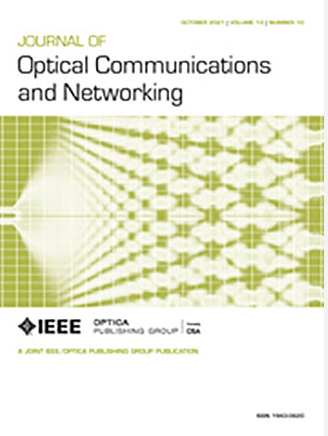DemoQuanDT: a carrier-grade QKD network
IF 4.3
2区 计算机科学
Q1 COMPUTER SCIENCE, HARDWARE & ARCHITECTURE
引用次数: 0
Abstract
Quantum key distribution networks (QKDNs) enable secure communication even in the age of powerful quantum computers. In the hands of a network operator, which can offer its service to many users, the economic viability of a QKDN increases significantly. The highly challenging operator–user relationship in a large-scale network setting demands additional requirements to ensure carrier-grade operation. Addressing this challenge, this work presents a carrier-grade QKDN architecture, which combines the functional QKDN architecture with the operational perspective of a network operator, ultimately enhancing the economic viability of QKDNs. The focus is on the network and key management aspects of a QKDN while assuming state-of-the-art commercial QKD modules. The presented architecture was rolled out within an in-field demonstrator, connecting the cities of Berlin and Bonn over a link distance of 923 km across Germany. We could show that the proposed network architecture is feasible, integrable, and scalable, making it suitable for deployment in real-world networks. Overall, the presented carrier-grade QKDN architecture promises to serve as a blueprint for network operators providing QKD-based services to their customers.DemoQuanDT:电信级QKD网络
量子密钥分配网络(qkdn)即使在强大的量子计算机时代也能实现安全通信。在网络运营商手中,它可以向许多用户提供服务,QKDN的经济可行性大大增加。在大规模网络环境中,高度挑战性的运营商-用户关系需要额外的要求来确保运营商级的运营。为了应对这一挑战,本研究提出了一种运营商级QKDN架构,该架构将功能性QKDN架构与网络运营商的运营视角相结合,最终提高了QKDN的经济可行性。重点是QKDN的网络和密钥管理方面,同时假设最先进的商业QKD模块。所展示的建筑在现场演示中推出,连接柏林和波恩的城市,跨越德国923公里。我们可以证明所提出的网络体系结构是可行的、可集成的和可扩展的,使其适合在实际网络中部署。总的来说,所提出的运营商级QKDN架构有望作为网络运营商向其客户提供基于qkd的服务的蓝图。
本文章由计算机程序翻译,如有差异,请以英文原文为准。
求助全文
约1分钟内获得全文
求助全文
来源期刊
CiteScore
9.40
自引率
16.00%
发文量
104
审稿时长
4 months
期刊介绍:
The scope of the Journal includes advances in the state-of-the-art of optical networking science, technology, and engineering. Both theoretical contributions (including new techniques, concepts, analyses, and economic studies) and practical contributions (including optical networking experiments, prototypes, and new applications) are encouraged. Subareas of interest include the architecture and design of optical networks, optical network survivability and security, software-defined optical networking, elastic optical networks, data and control plane advances, network management related innovation, and optical access networks. Enabling technologies and their applications are suitable topics only if the results are shown to directly impact optical networking beyond simple point-to-point networks.

 求助内容:
求助内容: 应助结果提醒方式:
应助结果提醒方式:


